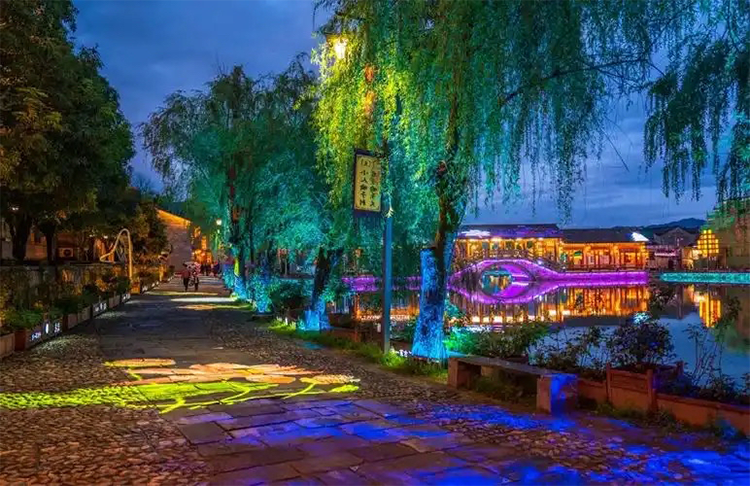Liukeng, Jiangxi: Discover Gan-style Architecture in an Ancient Village
Introduction:
Winding bluestone lanes run beneath weathered horse-head walls, and clear streams mirror the upturned eaves of centuries-old roofs. Enter Liukeng Ancient Village in Le’an County, Jiangxi, and you step into a living, brick-and-timber epic. As one of the most complete ensembles of Gan-style (Jiangxi) architecture, Liukeng is also a living shrine of clan culture: the Dong family has lived here for more than thirty generations, and every carved lattice, ancestral hall plaque, and scholar’s memorial tells the story of a “farming-and-studying” tradition.
1. Why Liukeng is Called “The First Eternal Village”
The village’s chessboard layout — seven horizontal streets and one main vertical axis — creates a carefully ordered architectural maze. Over 260 Ming- and Qing-era houses set in gray brick and tiles concentrate the essence of Gan-style architecture: towering fireproof horse-head walls, lifelike wood-carved door lintels depicting fishermen, woodcutters, and scholars, and landmarks such as the Zhuangyuan (Top Scholar) Tower and the residences of prominent Confucian scholars that inscribe the prestige of the local examination tradition into beams and pillars.
Core values:
– National Historic and Cultural Village (since 2003): Liukeng serves as a living specimen of Jiangnan agricultural civilization and clan society, with integrity and preservation far exceeding many counterparts.
– A practical textbook of feng shui: from its mountainside-and-riverside siting to combined hidden-channel and open-gutter drainage, the village still reflects the ancient idea of harmony between humans and nature.
2. The Dong Family Story: Imperial Exams, Genealogy, and Plaques
From the Northern Song to the late Qing, Liukeng produced 32 jinshi (successful candidates in the highest imperial exams). Plaques honoring literary and martial success still hang in the village. As you wander, you encounter fragments of that legacy:
– The “School of Neo-Confucianism” residence: the former home of Ming dynasty scholar Dong Sui, whose lintel still reads the austere four characters “Zheng Da Guang Ming” (upright, glorious, and bright).
– Genealogy library: a Dong clan genealogy scroll nearly 2.8 meters long documents a millennium of bloodlines — a genetic-style record of Chinese clan culture.
Tip: If you visit during Qingming (Tomb-Sweeping Day) or the Mid-Autumn Festival, you might witness ancestral rites; drums and ritual music still give these ceremonies great solemnity.

3. For Architecture Lovers: Reading Gan-Style Houses
Liukeng’s buildings form a three-dimensional encyclopedia:
– Study the carvings: stone sculptures like the “Qilin Bringing a Child” above gates and plum-pattern latticework between windows symbolize family hopes for official success and moral character.
– Understand function: layouts such as front hall/back sleeping quarters and bright halls/dark rooms reflect traditional social order and household roles.
Photography tip: Early-morning mist offers the best light. A drone top-down shot can capture the village set like an ink-wash painting against the hills.
4. When to Visit: Seasons and Atmosphere
– Best seasons: Spring and autumn (March–May; September–November). In spring, rapeseed flowers contrast with black tiles; in autumn, harvest and sun-drying customs come alive.
– Rainy-day mood: The village in light drizzle embodies Jiangnan charm; the drainage channels produce a soft, tinkling soundtrack.
Avoid: High summer (July–August) when heat can be intense and shade limited. Winter sees fewer tourists and a strong local New Year atmosphere.

5. Practical Guide: Planning a Deep Cultural Visit
Getting there:
– From Nanchang: About 2.5 hours by car (via Fuzhou), or take high-speed rail to Fuzhou (Fuzhou–Jiangxi? here meaning Fuzhou in Jiangxi prefecture), then a tourist shuttle from Fuzhou station (about 1.5 hours).
Village touring:
– Walking only: Stone streets are even but not wheelchair-friendly; wear non-slip shoes.
Experience upgrades:
– 2-hour highlights route: Old opera stage → Zhuangyuan Tower → Neo-Confucian residence → Main Dong Ancestral Hall.
– Half-day deep route: Add the genealogy library and agricultural tools exhibition; finish with local white tea at a streamside teahouse near dusk.
Food and lodging:
– Must-try local dishes: fermented Le’an preserved fish (distinctive fermented flavor) and bamboo-fungus stewed soup. The village entrance’s “Ancient Camphor Restaurant” is well recommended.
– Accommodation: No hotels inside the village; stay in nearby Niutian town guesthouses (3 km away) or return to Fuzhou city for hotels.
Tickets and services:
– Admission: 80 yuan per person (covers main houses). Electronic audio guides: 30 yuan each (available in English, Japanese, and Korean).
– Important: Some historic residences require a guide to enter. Small-group shared guiding is suggested (under-10 people shared guide fee around 200 yuan per group).

Conclusion:
As the setting sun gilds the plaque on the Zhuangyuan Tower, Liukeng winds down in a haze of cooking smoke. The village resists commercialization; what remains is the sediment of civilizational memory embedded in bricks and tiles. Whether you are an architectural scholar, history enthusiast, or a traveler seeking quiet pastoral beauty, Liukeng offers a resonant encounter. Bring this guide and open a dialogue with time.


